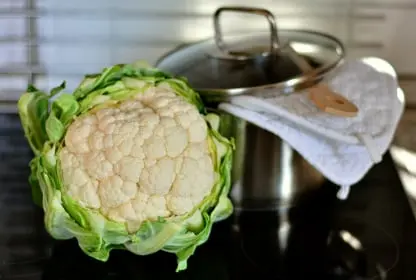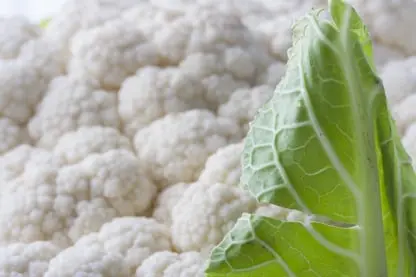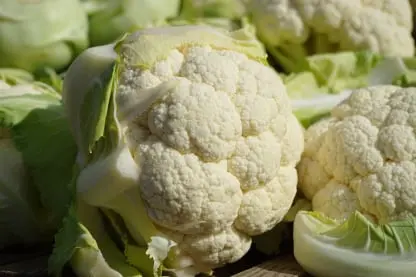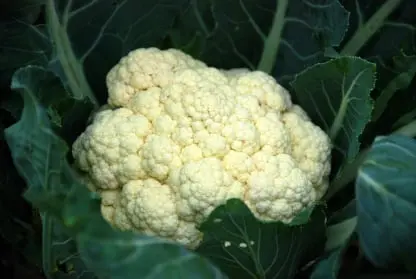Cauliflower packing app:
Cauliflower packing app for cauliflower packers to wash, cool, pack and ship fresh cauliflower. Full cauliflower packhouse management solution for cauliflower inventory, sales, shipping, traceability.

Cauliflower Packing App for accurate order filling & production
View Packing App Specifications.
Cauliflower Cooling and Storage Post-Harvest
May 11, 2015 by semco with no comment Cooling
Cauliflower is renowned the world over for its healthy, nutritious properties and its versatility in an array of dishes. Besides the classic white variety, cauliflower comes in various other bright colors that make it an attractive, welcome addition to any plate. As always, however, for maximum taste, quality, and nutrition it is important to start with fresh cauliflower. Let’s take a look at some key facts about cauliflower as well as cooling and storage considerations and methods.
General Facts About Cauliflower
Cauliflower belongs to the species Brassica oleracea, an extremely important species for human food that is not only responsible for cauliflower but also cabbage, broccoli, collard greens, brussels sprouts, and kale. All of these various vegetables are technically the same species with different cultivars emphasizing and expressing the various trademark qualities we recognize from the foods. In fact the word “cauliflower” actually derives from the Latin word “caulis,” which means cabbage.
Cauliflower has existed since ancient times, with the oldest known written record of it coming from Pliny the Elder, a noted Roman philosopher and naturalist. Cauliflower is low in calories, carbohydrates, and fat while containing many important vitamins and minerals such as Vitamin C, folate, dietary fiber, phytochemicals, and carotenoids. It is considered very nutritionally dense and integrates well into healthy diets and lifestyles.

Cauliflower packing app manages food safety
Cauliflower Colors and Varieties
There are four main types of cauliflower:
Northern European Annuals – Developed in German in the 18th century it includes cultivars such as Snowball and Erfurt and is commonly used for summer and fall harvests throughout Europe and North America.
Northwest European Biennial – Developed in France in the 19th century it includes cultivars such as Roscoff and Angers and is commonly used for early spring and winter harvests.
Asian – Developed in the 19th century in China and India it includes cultivars such as Early Patna and Early Benaras.
Italian – The Italian type is the original ancestral type from which the others are derived. It includes the Romanesco cultivar as well as multi-colored varieties discussed in more detail below. It is diverse in appearance and comes in both annual and biennial types.
Colors – Cauliflower comes in an array of bright as well as muted colors. White is the most common and prolific type of cauliflower but it also comes in various shades of brown, yellow, orange, purple, and green. The green variety is often referred to as “broccoflower” due to its similarities to broccoli.

Cauliflower Packing App for reduced food & fresh produce waste
General Information About Cooling and Storing Cauliflower
The following are several key factors to consider for properly cooling and storing cauliflower:
Temperature – Temperature is one of the most important factors for maximizing the quality and shelf life of cauliflower. At 59°F cauliflower only last about 3 days after harvest. By contrast cauliflower will last about 5 days at 50°F and up to 10 days at 41°F.
Relative Humidity – A relative humidity of about 95% is optimal to prevent the cauliflower from drying out.
Handling – Cauliflower are easily damaged by physical trauma, which in turn reduces quality and hastens decay. Care should be taken to avoid damaging them.
Shelf Life – Under optimal conditions cauliflower may last about 10 days after harvest.
Ethylene Sensitivity – Cauliflower produce very little ethylene but are highly sensitive to it. They should be kept isolated from high ethylene producers like tomatoes and apples.

Cauliflower packing app manages supplier food quality and traceability
Methods of Cooling Cauliflower
Hydrocooling – Hydrocooling is a very desirable practice for cauliflower because their shelf life and quality is enhanced when field temperatures are quickly removed. Hydrocooling involves submerging the cauliflower in near freezing water.
Room Cooling – Room cooling, which involves simply placing the cauliflower in a cooled room and allowing them to reach ambient temperatures is insufficient alone to ensure best quality. However, after precooling via the hydrocooling method is performed room cooling may be adequate.
Forced-Air Cooling – Forced-air cooling, which involves forcing cool airflow around the cauliflower, is helpful to ensure that they reach good storage temperatures quickly. This method may be paired with hydrocooling.
SEMCO/SEMCOLD LLC develops high quality industrial cooling and storage systems. Our systems are great for use with commercially grown produce such as cauliflower and their relatives broccoli, cabbage, kale, and brussels sprouts, among others. Our priority is ensuring that our clients’ have dependable cooling systems that perfectly meet their needs and support optimum food quality.